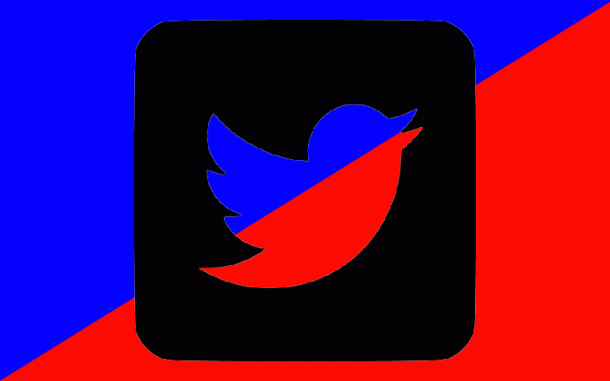
Wait! You mean all of America isn’t represented in the daily tsunami of acid that is political Twitter?
That’s the thesis of an interesting, but ultimately hollow, New York Times piece built on three days of Gray Lady representatives doing National Geographic-style heart-to-hearts with ordinary Americans who live in and around Scranton, Pa.
Why focus on this specific location, if the goal is to listen to the heart of America? Why, isn’t the logic — the political logic, that is — perfectly obvious? Here is the overture:
SCRANTON, Pa. — This hilly, green stretch of northeastern Pennsylvania is a critical front line in next year’s battle for control of the country. Donald J. Trump made huge gains among white working-class voters here, and Democrats want to win them back. Joe Biden, who was born here, can’t stop talking about it.
But just because Mr. Biden can’t stop talking about Scranton doesn’t mean everyone in Scranton is talking about Mr. Biden, the president, or politics at all. In three days of interviews here recently, many people said they were just scraping by and didn’t have a lot of patience for politics. Many said they didn’t follow the news and tried to stay out of political discussions, whether online or in person. National politics, they said, was practiced in a distant land by other people and had little effect on their lives.
This leads to this somber double-decker Times headline:
The America That Isn’t Polarized
Political institutions may be more divided than they’ve been in a century and a half, but how divided are Americans themselves?
So the goal is to learn why many average Americans are not as enraged about politics as are, well, New York Times editors and reporters who live on Twitter? Or think of it another way: Is this article, in part, a response to liberal and conservative critics (shout out to Liz Spayd, the Times public editor pushed out two years ago) who have complained that America’s most influential newsroom isn’t all that interested in covering half or more of America?
So what subjects were avoided in this epic piece? For starters, here are some terms that readers will not encounter as they work through it — “Supreme Court,” “God,” “abortion,” “schools,” “bathrooms” and, to probe recent fights among conservatives, “Drag queen story hour.”
In other words, this article tends to focus on politics as politics alone, as opposed to discussing some of America’s fault-line issues linked to religion, morality and culture.
Why does that matter? Well, let’s set the WABAC Macine — once again — to the year 2003 and that Atlantic Monthly essay called “Blue Movie.” Read this key passage and you’ll immediately see why I think it’s relevant in this discussion:
Early in the 1996 election campaign Dick Morris and Mark Penn, two of Bill Clinton’s advisers, discovered a polling technique that proved to be one of the best ways of determining whether a voter was more likely to choose Clinton or Bob Dole for President. Respondents were asked five questions, four of which tested attitudes toward sex: Do you believe homosexuality is morally wrong? Do you ever personally look at pornography? Would you look down on someone who had an affair while married? Do you believe sex before marriage is morally wrong? The fifth question was whether religion was very important in the voter’s life.
Respondents who took the “liberal” stand on three of the five questions supported Clinton over Dole by a two-to-one ratio; those who took a liberal stand on four or five questions were, not surprisingly, even more likely to support Clinton. The same was true in reverse for those who took a “conservative” stand on three or more of the questions. (Someone taking the liberal position, as pollsters define it, dismisses the idea that homosexuality is morally wrong, admits to looking at pornography, doesn’t look down on a married person having an affair, regards sex before marriage as morally acceptable, and views religion as not a very important part of daily life.)
Could it be that the Times team produced a story that contains, well, a God-shaped hole or, to use a vague term I strive to avoid, a “values” shaped hole? Maybe heartland Americans are burned out on partisan politics, to some degree, but they still care about issues that they believe transcend the ballot box?
Meanwhile, here is the thesis statement material in this Times piece. This is rather long, but it’s essential:
Americans are living through an unusual political moment. Their political institutions are the most divided they’ve been since the period after the Civil War, according to some political science research. But how divided are Americans themselves?
By some measures, around half of the population is either disengaged or has ideologically inconsistent views. Together, 54 percent of Americans either hold a roughly equal mix of conservative and liberal positions or say they don’t follow the news most of the time, according to an Upshot analysis of 2017 data from Pew Research.
People in this moderate middle are less ideologically rigid than their politically aroused compatriots. They may lean left or right or hold strong views about the president — 65 percent of these less engaged voters say they either strongly approve or disapprove of his performance. But they do not line up on every single issue with progressives or conservatives, and for many, politics is not part of their everyday lives. Many want to find compromise and shrink from the conflict that modern politics has come to mean.
“We are just not seeing the polarization among the masses that people imagine,” said Sam Abrams, a visiting scholar at the American Enterprise Institute, who surveyed a nationally representative sample of Americans with NORC at the University of Chicago last year. “People who watch MSNBC and Fox are a loud but small minority. They are not representative of most Americans.”
These Americans are easy to miss.
Is it safe to assume that there there are some cultural and even religious issues hidden in the reference to many Americans holding “roughly equal mix of conservative and liberal positions”?
That’s my hunch.
Read it all. And if you think I have missed some crucial material in this Gray Lady shot over America’s bow, please let me know in our comments pages.
That is, if you feel motivated to do so.










